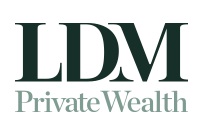Written by Tony Kaye, Senior Personal Finance Writer
The Australian Bureau of Statistics had some good news to share earlier this month, with new data showing average life expectancies in Australia are now at a record high and among the highest in the world.
The data showed that the average male life expectancy at birth had reached 81.2 years in 2018-2020, increasing from 80.9 in 2017-2019.
The average female life expectancy had also increased to 85.3 years, from 85 years.
Around 30 years ago (1990), the average life expectancy at birth in Australia was 73.9 years for males and 80.1 years for females, a gap of 6.2 years. That gap has now narrowed to 4.1 years.
The financial side of living longer
Of course, there are generally two sides to every story, even when it comes to living longer.
From a financial perspective, a key question for most of us is whether we’ll have enough money to last all the way through our retirement years?
In fact, it’s such a common question that in financial circles the prospect of running out of retirement money before death is officially known as “longevity risk”.
Longevity does certainly have a potential financial risk. Research conducted earlier this year by the Association of Superannuation Funds of Australia (ASFA) found most Australians will spend all their superannuation in retirement.
ASFA used data from the Australian Tax Office and Australian Prudential Regulation Authority (which both regulate segments of Australia’s $2.1 trillion superannuation sector) together with Household, Income and Labour Dynamics in Australia (HILDA) survey results.
The research found that:
-
the proportion of the population with superannuation drops sharply with increasing age.
-
80 per cent of people aged 60 and over who died in the period 2014 to 2018 had no super at all in the period of up to four years before their death.
-
for those aged 80 plus, over 90 per cent had no super in the four-year period before their death.
-
for the age 80 plus group, only 5 per cent of that group had more than $110,000 in superannuation in the period of up to four years before their death.
-
even in the case of those who died aged 60 to 69, less than half had any super at all.
-
men are more likely to have superannuation than women. For those who died in the period 2014 to 2018 only 15 per cent of females aged 60 plus at death had any superannuation compared to around 25 per cent of men.
How much do you need?
The million dollar (or more) question for many of us is how much accumulated superannuation money do you actually need to last through retirement?
Unfortunately, there’s no straightforward answer. It varies from person to person and couple to couple.
The ASFA Retirement Standard is of some help. It benchmarks the minimum annual cost of a comfortable or modest standard of living in retirement for singles and couples.
As at the end of the September quarter, it calculates that based on the current cost of living a single person needs $45,239 a year to live a comfortable retirement and a couple needs $63,799.
To live a modest retirement, a single needs $28,775 a year and a couple needs $41,446.
The above figures are based on the average person and do not take into account your unique circumstances and lifestyle, which might be substantially different. They don’t differentiate between whether the money needed per year comes from your superannuation savings, other investments, the Age Pension, or a combination.
That’s not really that relevant, although money from superannuation does have obvious advantages.
That’s because any income earned on money held within the superannuation regime, once converted into an account-based pension, will be tax-free in retirement. Income on money held in an accumulation account will be concessionally taxed.
In any event, generating the sort of annual income needed to match ASFA’s Retirement Standard calculations will ultimately depend on your investment strategy.
Staying financially active
Taking an active role in your investments, to ensure you have the best chance of protecting and growing your capital, is just as important in retirement as it is before you stop working.
For many retirees, low-risk assets such as cash and government-backed bonds are often seen as the safest ways of protecting capital over the long term.
Yet, depending on your broad retirement goals and tolerance for risk, putting all your eggs into one or two asset classes will most likely expose you to investment hazards over the long term.
That’s because asset classes perform differently from year to year. What you may see as a safe investment strategy today could easily become the opposite over time.
Investing across a range of asset classes during pension drawdown phase, including more volatile growth assets such as shares and listed property, will help smooth out poor returns from other asset classes from year to year.
While there’s no guarantee your retirement savings will last until you die, a diversified investment strategy will inevitably deliver steadier, tax-effective long-term returns.
To learn more, speak to us on (02) 8277 4605.
Source: Vanguard November 2021
Reproduced with permission of Vanguard Investments Australia Ltd
Vanguard Investments Australia Ltd (ABN 72 072 881 086 / AFS Licence 227263) is the product issuer. We have not taken yours and your clients’ circumstances into account when preparing this material so it may not be applicable to the particular situation you are considering. You should consider your circumstances and our Product Disclosure Statement (PDS) or Prospectus before making any investment decision. You can access our PDS or Prospectus online or by calling us. This material was prepared in good faith and we accept no liability for any errors or omissions. Past performance is not an indication of future performance.
© 2021 Vanguard Investments Australia Ltd. All rights reserved.
Important:
Any information provided by the author detailed above is separate and external to our business and our Licensee. Neither our business nor our Licensee takes any responsibility for any action or any service provided by the author. Any links have been provided with permission for information purposes only and will take you to external websites, which are not connected to our company in any way. Note: Our company does not endorse and is not responsible for the accuracy of the contents/information contained within the linked site(s) accessible from this page.



